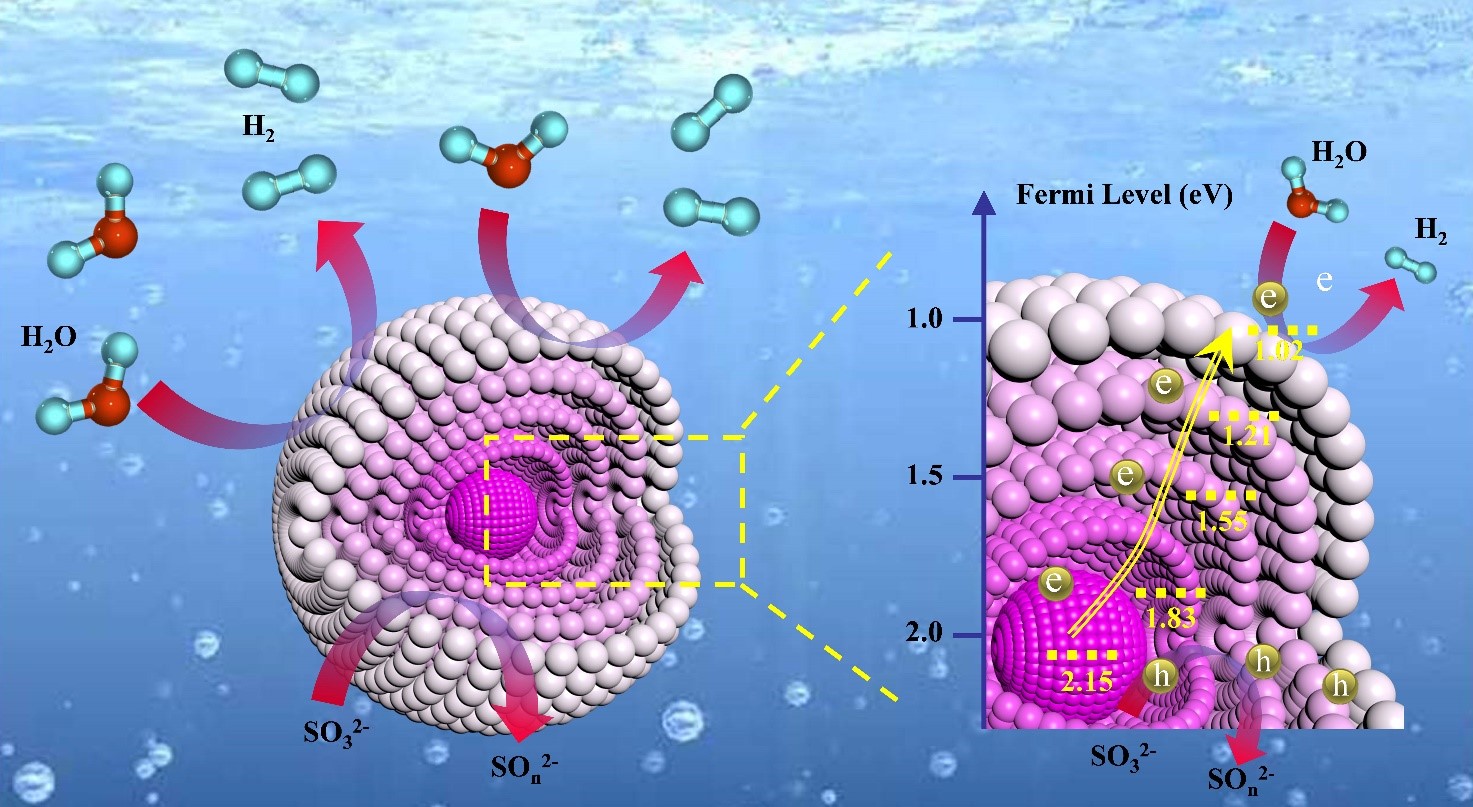Heat Diffusion‐Induced Gradient Energy Level in Multishell Bisulfides for Highly Efficient Photocatalytic Hydrogen Production

Insufficient light absorption and low carrier separation/transfer efficiency constitute two key issues that hinder the development of efficient photocatalytic hydrogen production. Here, multishell ZnS/CoS2 bisulfide microspheres with gradient distribution of Zn based on the heat diffusion theory are designed. The Zn distribution can be adjusted by regulating the heating rate and manipulating the diffusion coefficients of the different elements conforming the multishell photocatalyst. Because of the unique structure, a gradient energy level is created from the core to the exterior of the multishell microspheres, which effectively facilitates the exciton separation and electron transfer. In addition, stronger light absorption and larger specific surface area have been achieved in the multishell ZnS/CoS2 photocatalysts. As a result, the multishell ZnS/CoS2 microspheres with gradient distribution of Zn exhibit a remarkable hydrogen production rate of 8001 µmol g−1 h−1, which is 3.5 times higher than that of the normal multishell ZnS/CoS2 particles with well‐distributed Zn and 11.3 times higher than that of the mixed nonshell ZnS and CoS2 particles. This work demonstrates for the first time that controlling the diffusion rate of the different elements in the semiconductor is an effective route to simultaneously regulate morphology and structure to design highly efficient photocatalysts.

